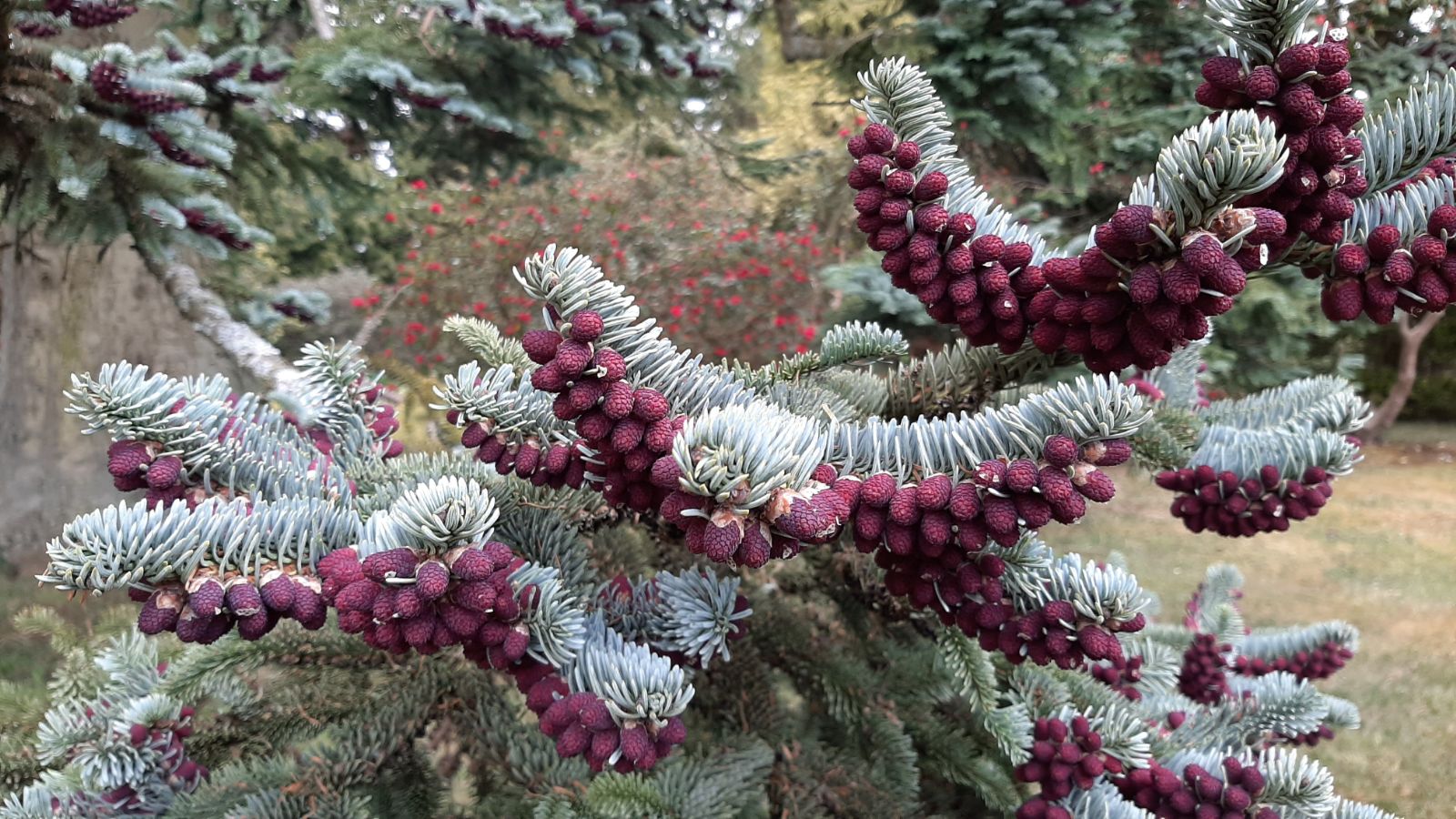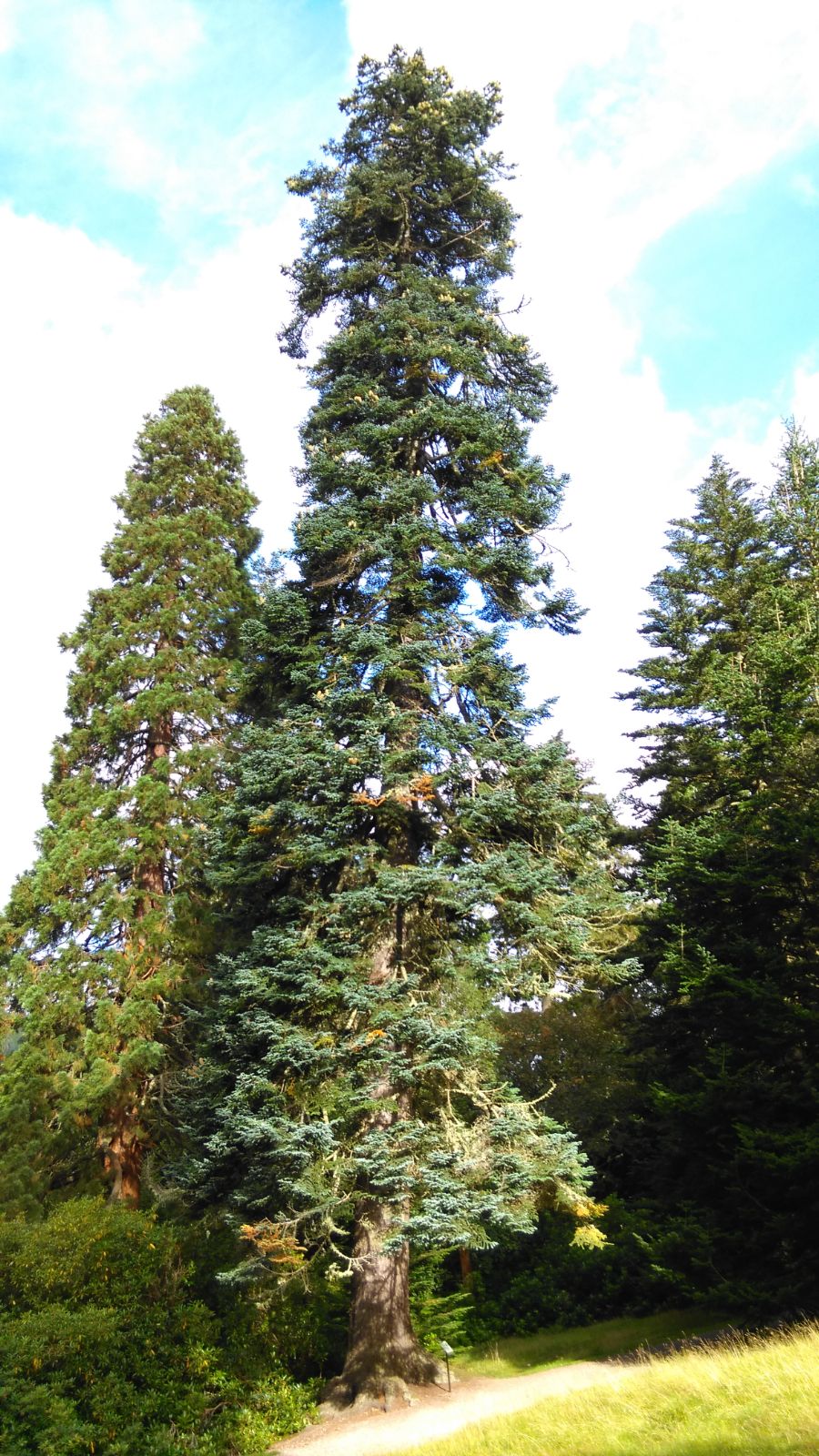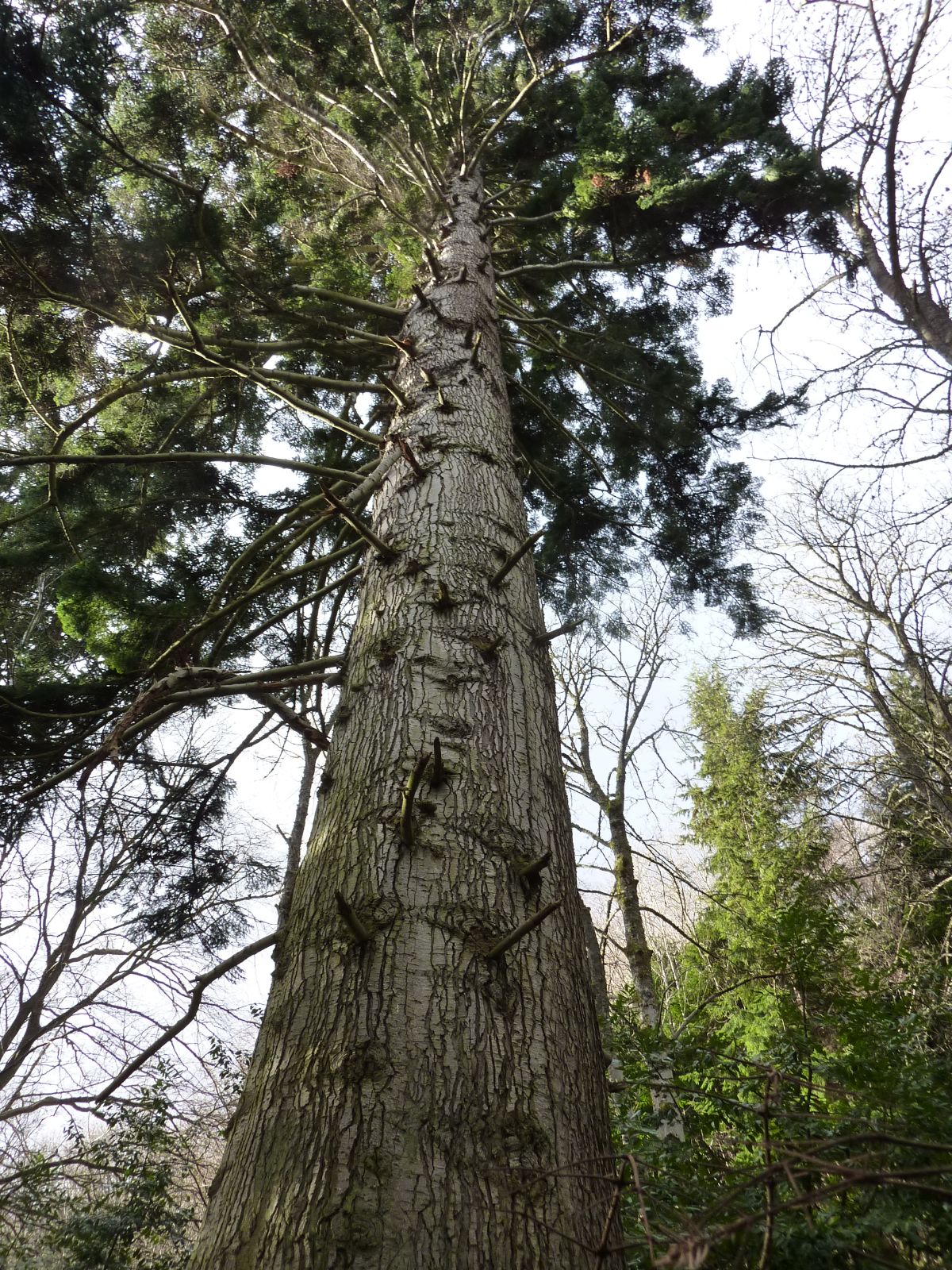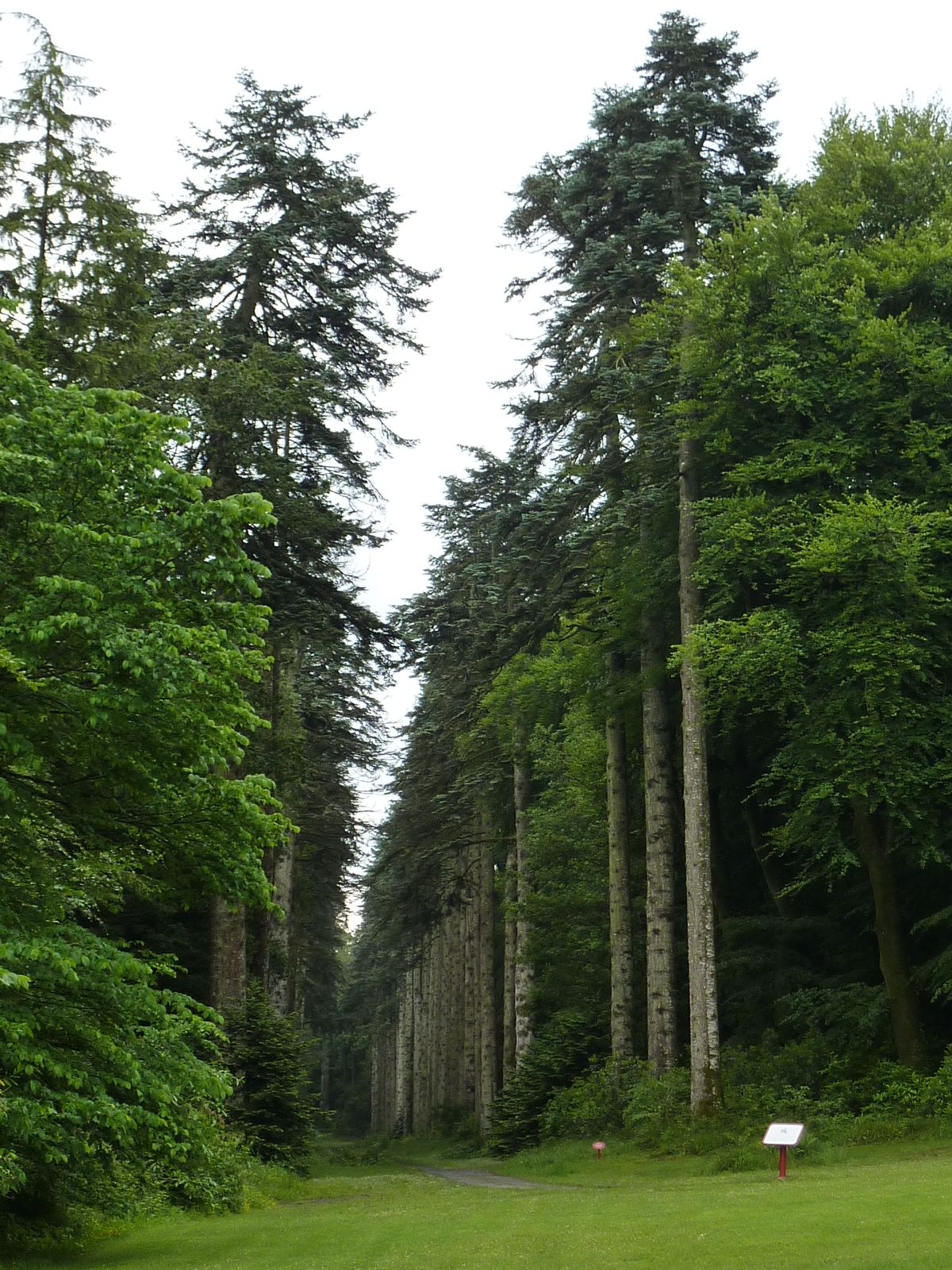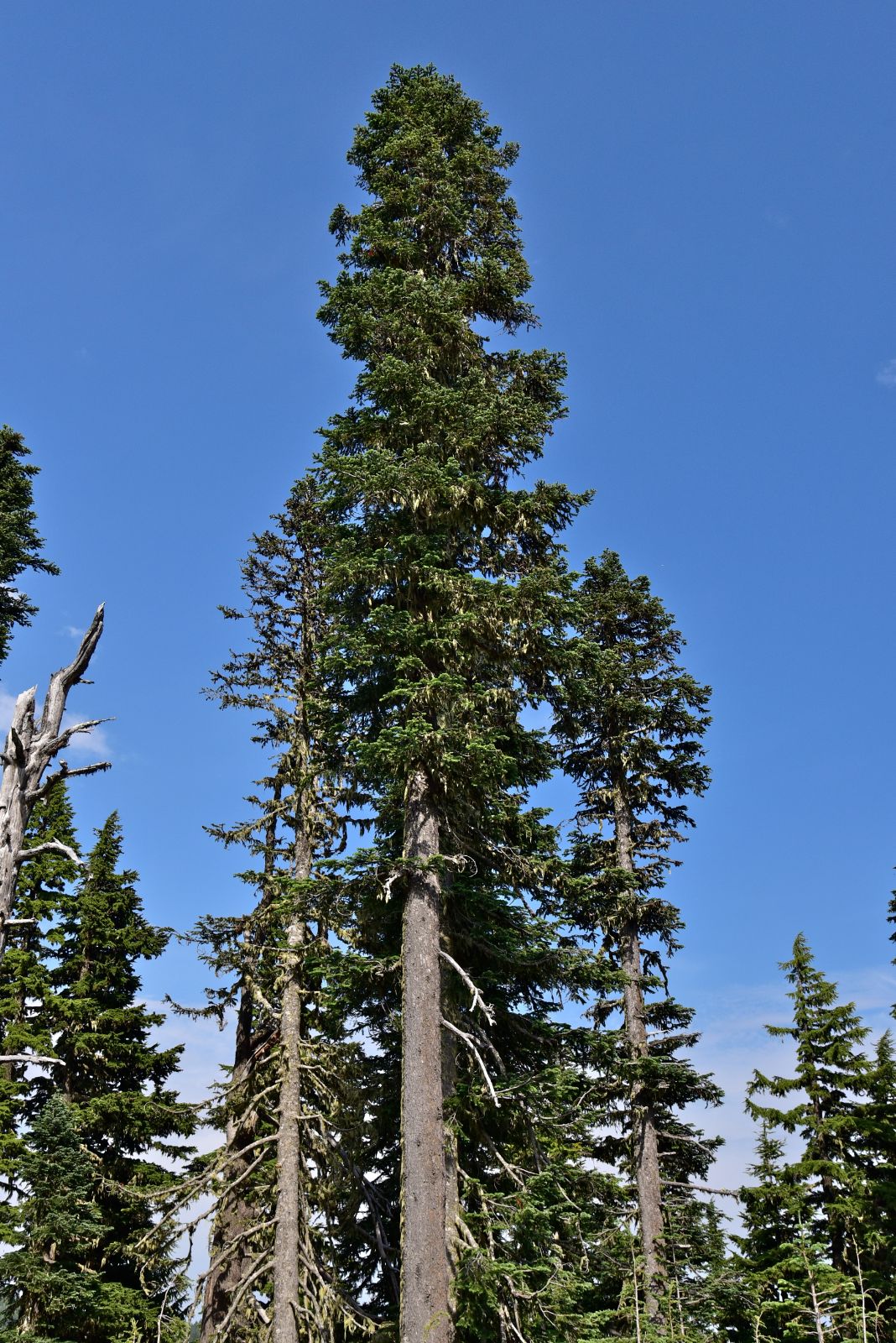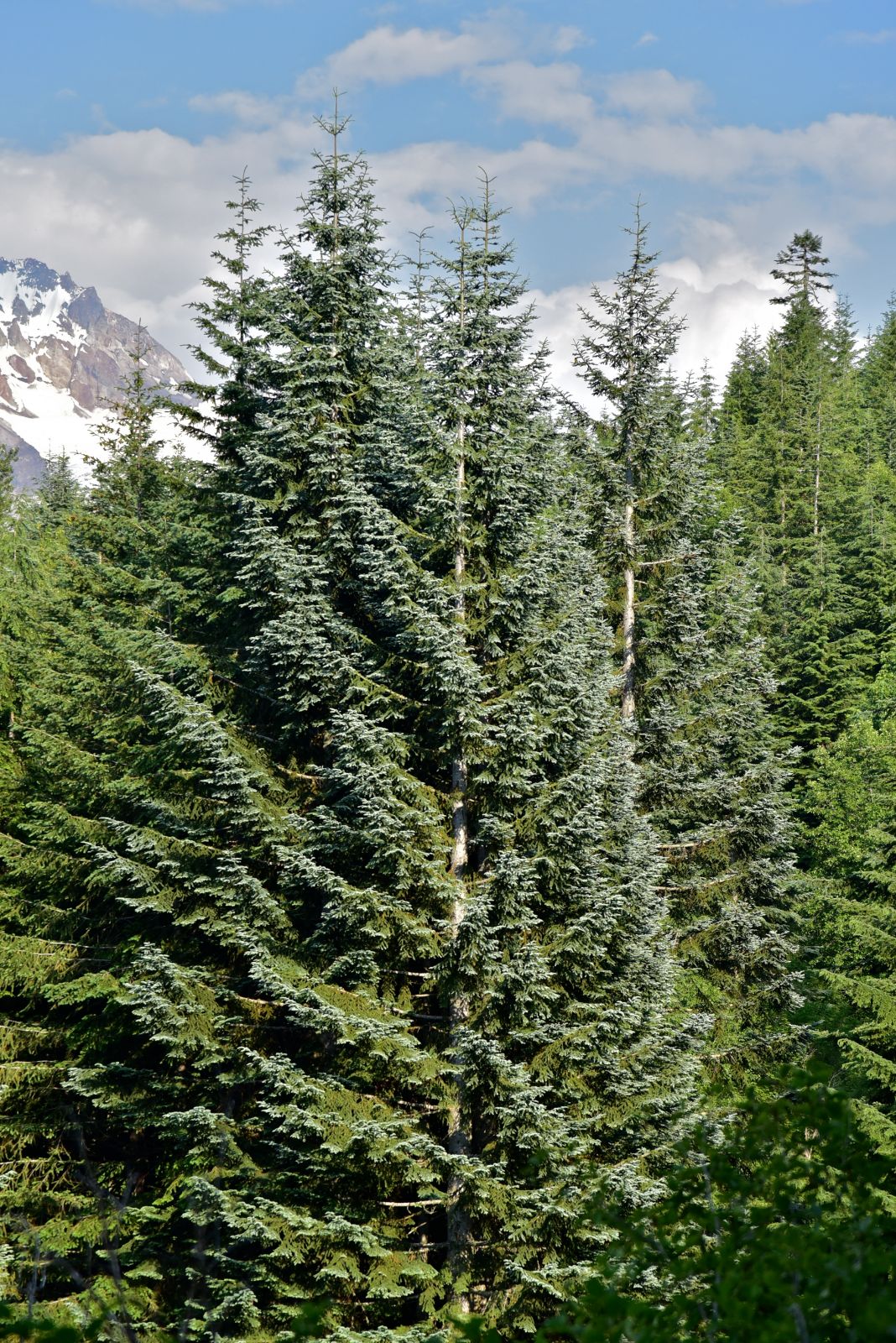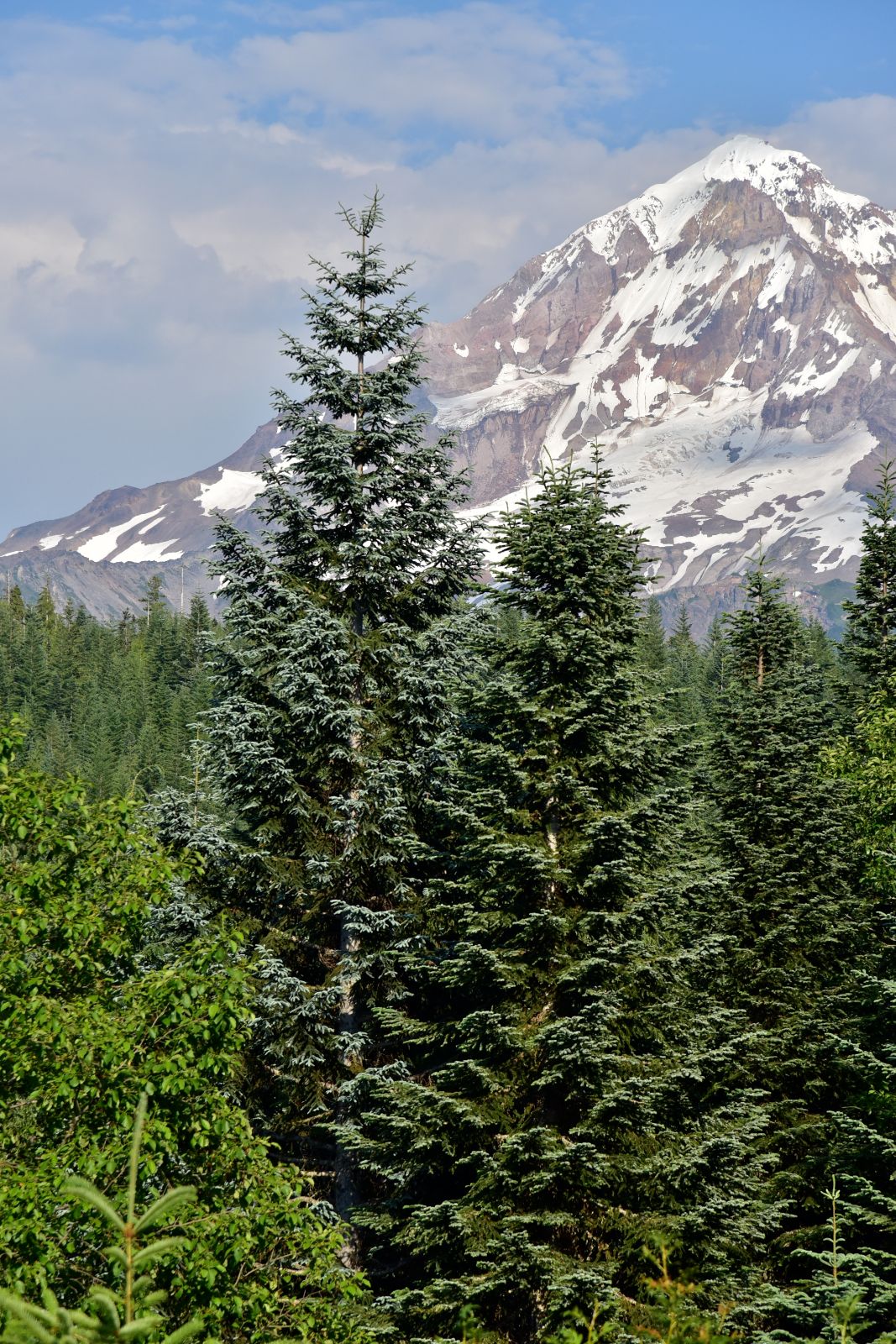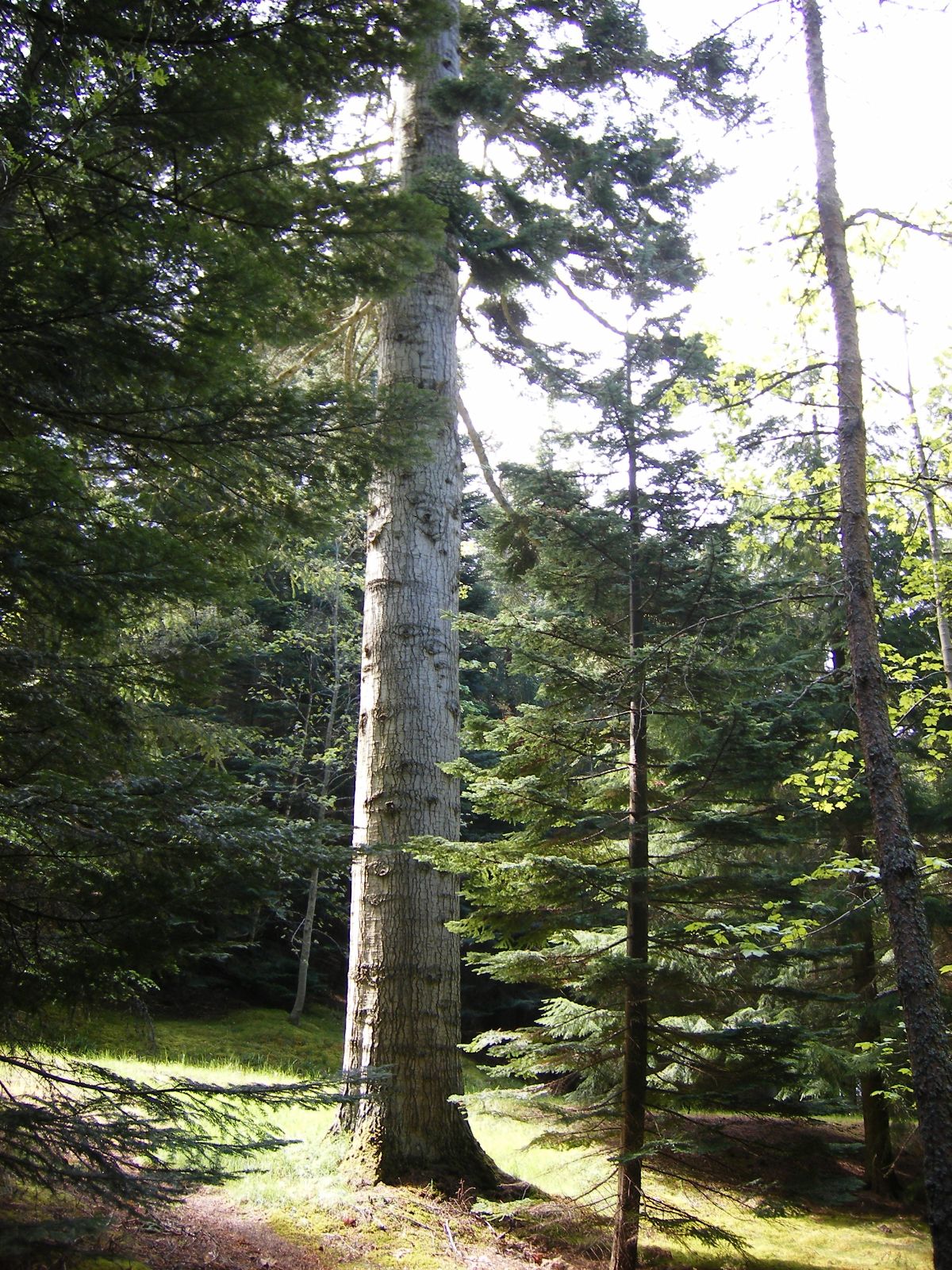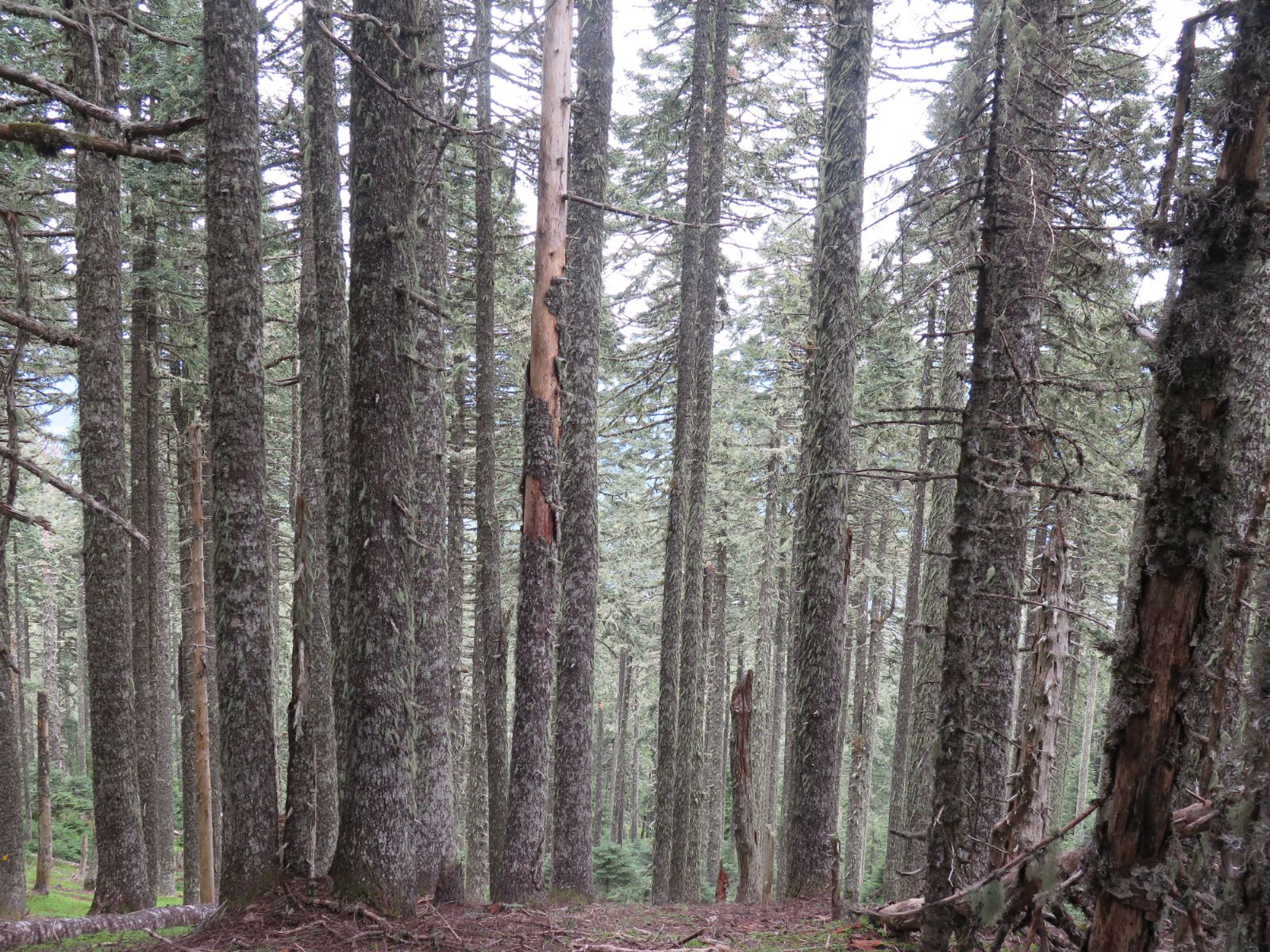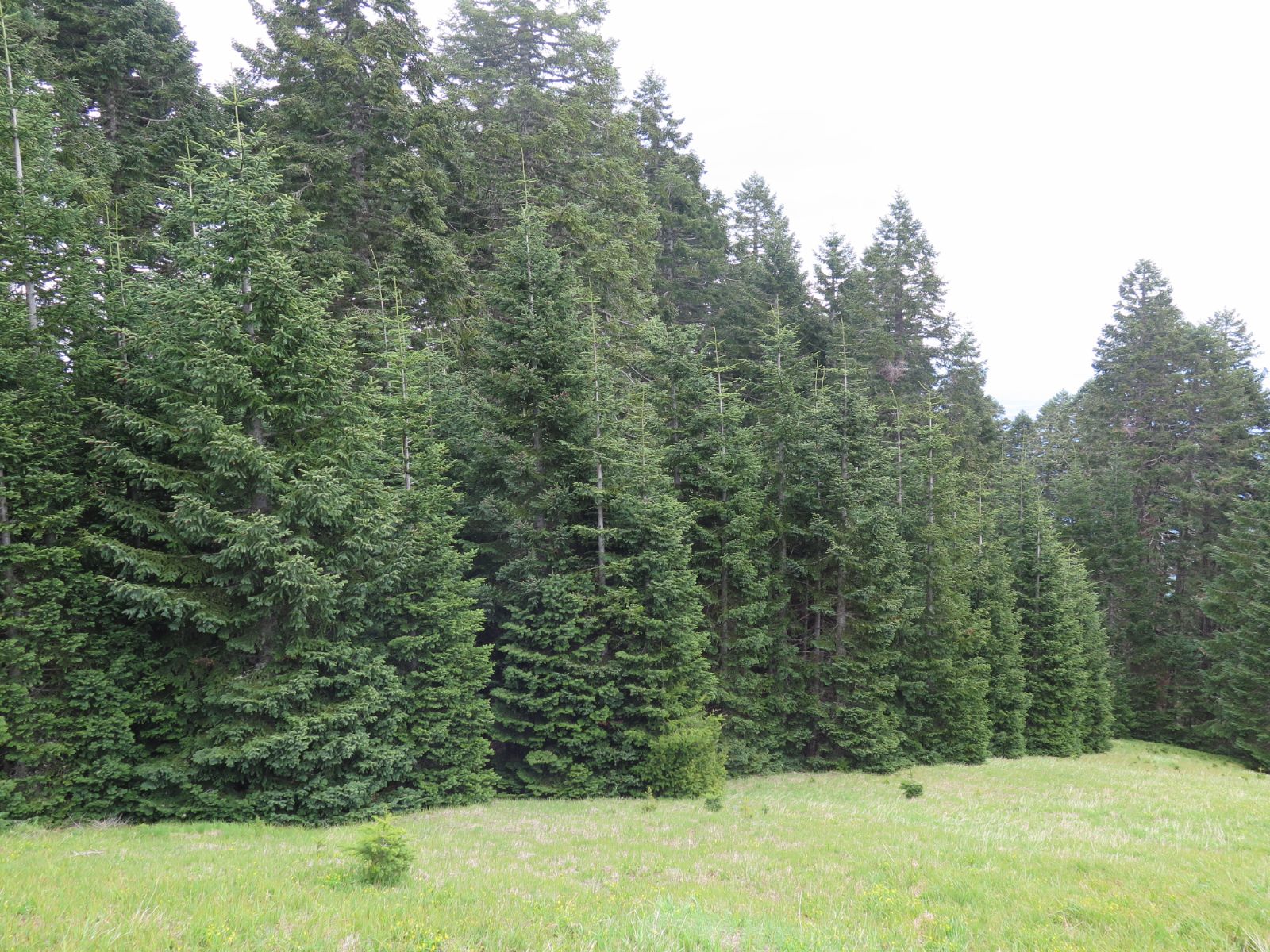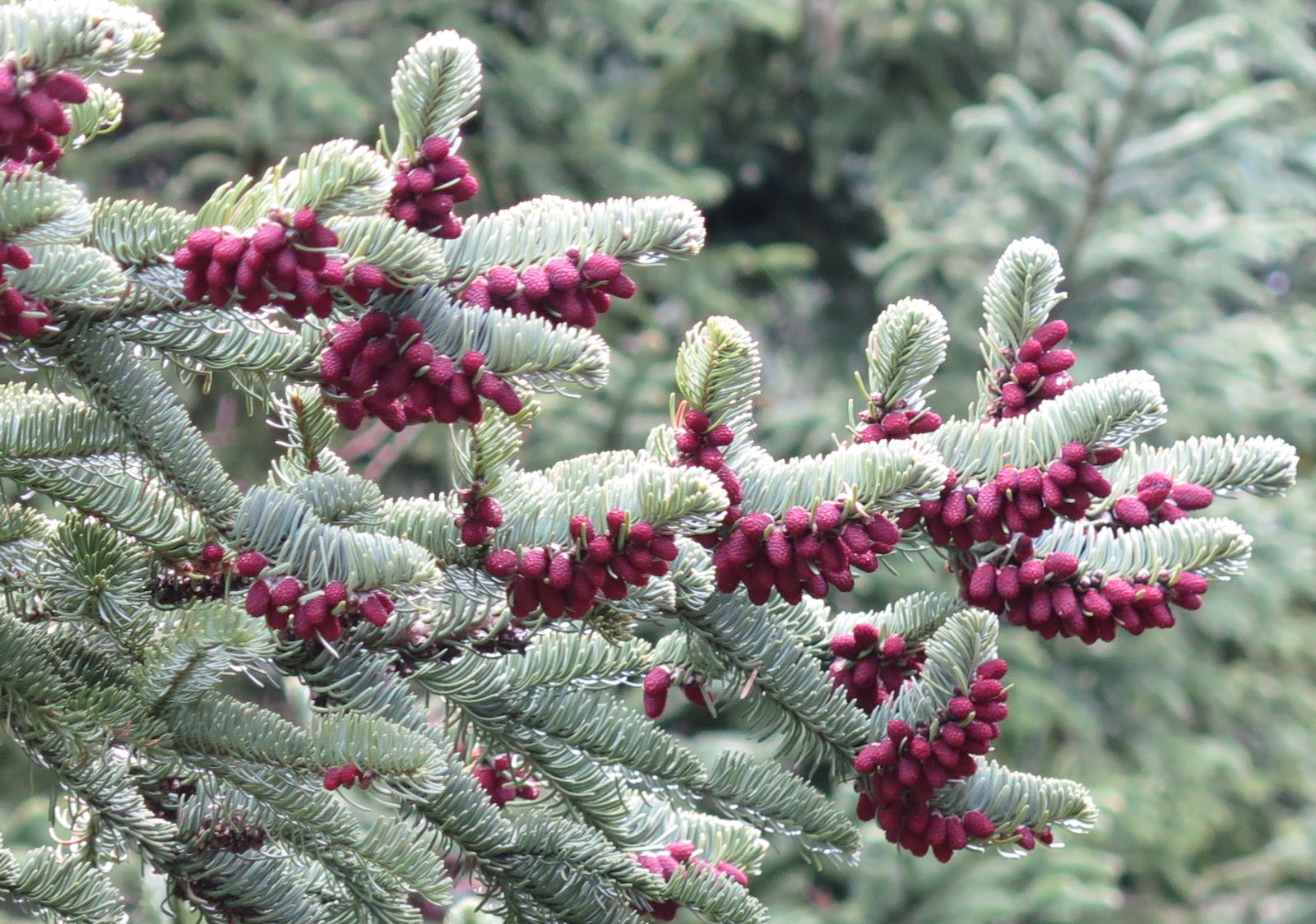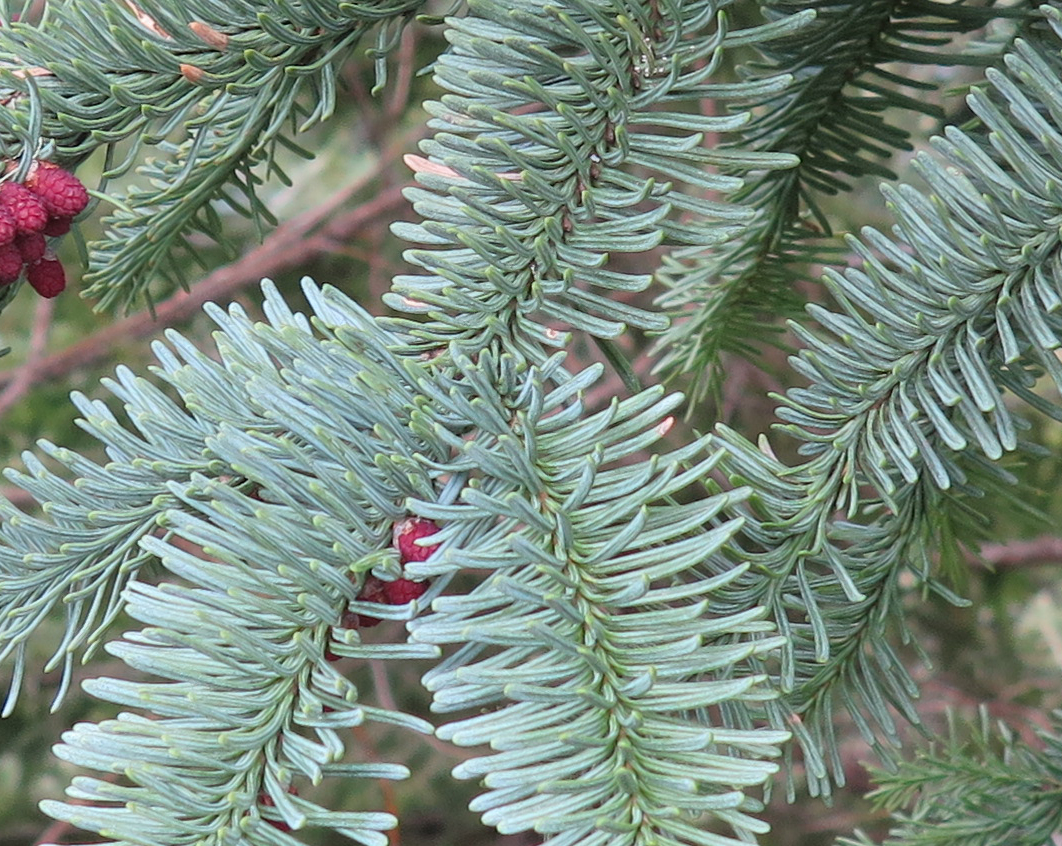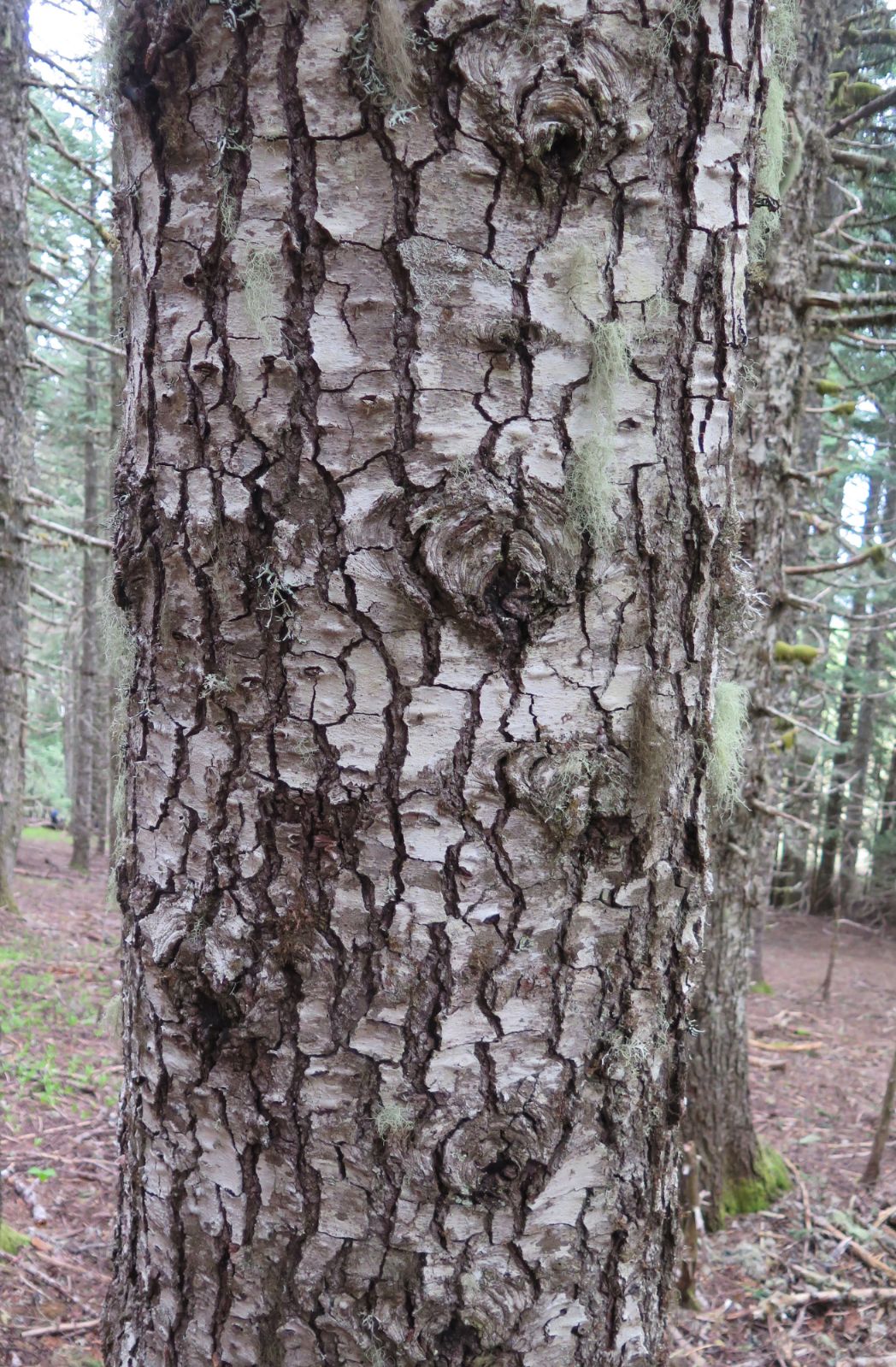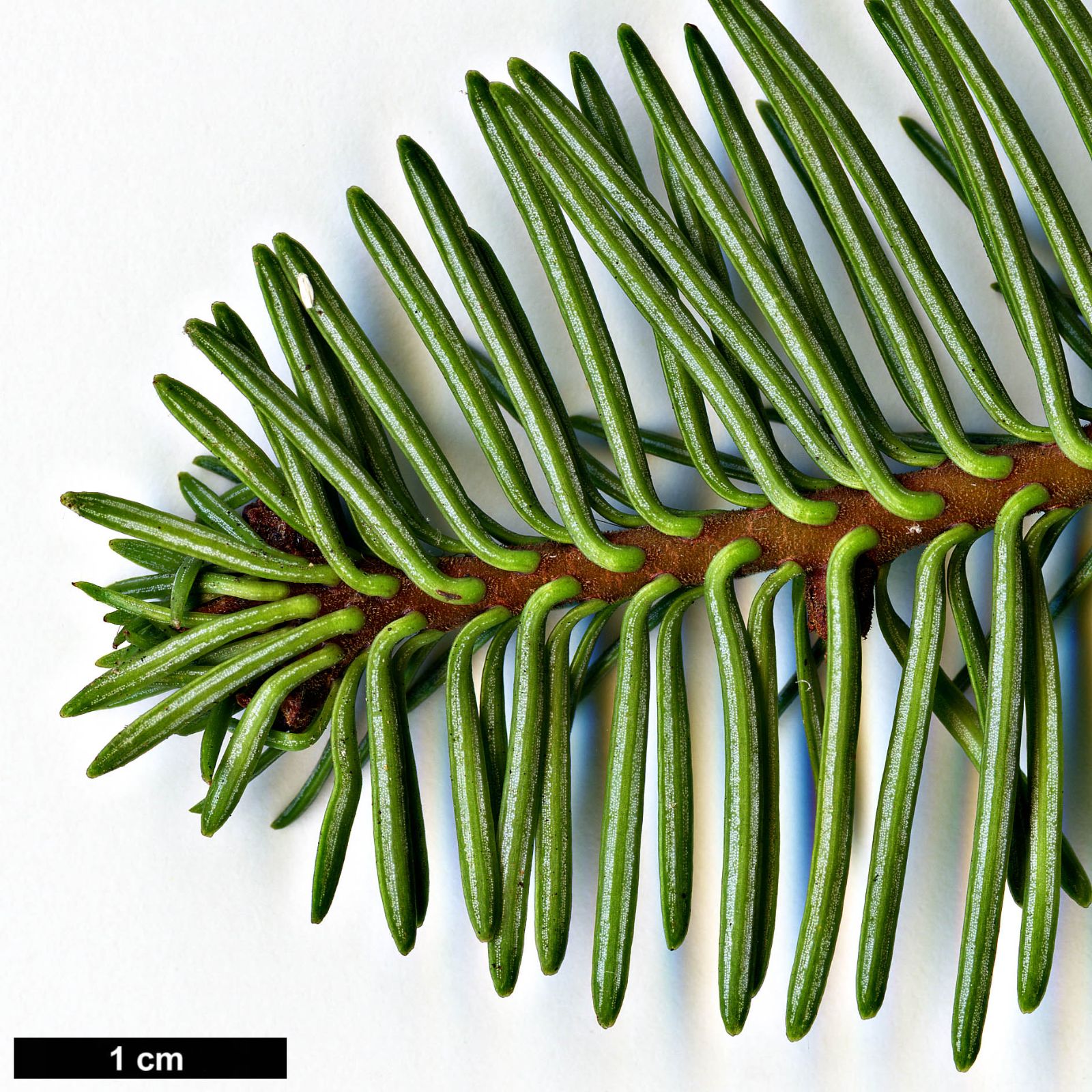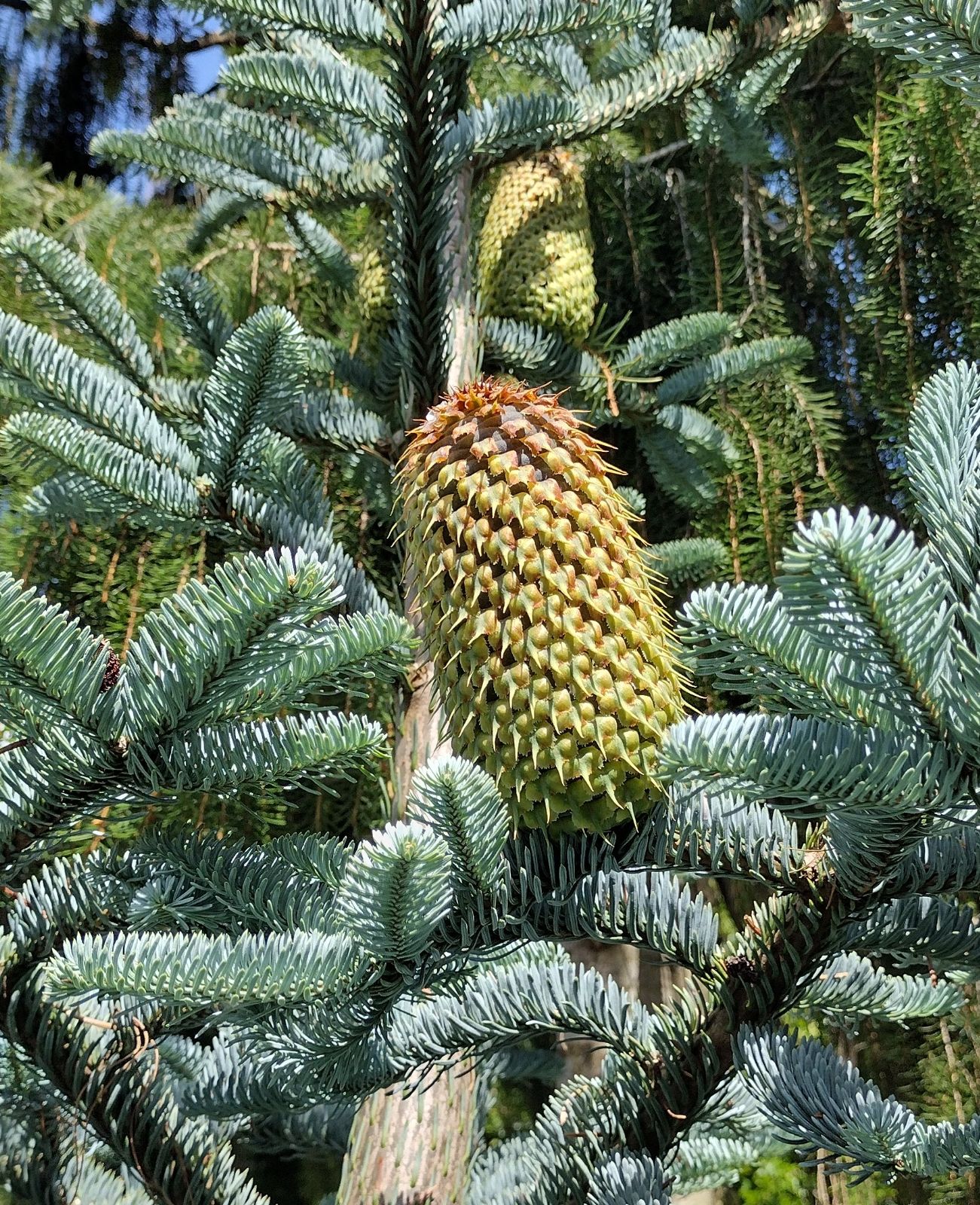Abies procera
Sponsor
Kindly sponsored by
Sir Henry Angest
Credits
Tom Christian (2021)
Recommended citation
Christian, T. (2021), 'Abies procera' from the website Trees and Shrubs Online (treesandshrubsonline.
Genus
Common Names
- Noble Fir
Synonyms
- Abies nobilis (Douglas ex D. Don) Lindl. [not A. nobilis Dietrich]
Infraspecifics
Other taxa in genus
- Abies alba
- Abies amabilis
- Abies × arnoldiana
- Abies balsamea
- Abies beshanzuensis
- Abies borisii-regis
- Abies bracteata
- Abies cephalonica
- Abies × chengii
- Abies chensiensis
- Abies cilicica
- Abies colimensis
- Abies concolor
- Abies delavayi
- Abies densa
- Abies durangensis
- Abies ernestii
- Abies fabri
- Abies fanjingshanensis
- Abies fansipanensis
- Abies fargesii
- Abies ferreana
- Abies firma
- Abies flinckii
- Abies fordei
- Abies forrestii
- Abies forrestii agg. × homolepis
- Abies fraseri
- Abies gamblei
- Abies georgei
- Abies gracilis
- Abies grandis
- Abies guatemalensis
- Abies hickelii
- Abies holophylla
- Abies homolepis
- Abies in Mexico and Mesoamerica
- Abies in the Sino-Himalaya
- Abies × insignis
- Abies kawakamii
- Abies koreana
- Abies koreana Hybrids
- Abies lasiocarpa
- Abies magnifica
- Abies mariesii
- Abies nebrodensis
- Abies nephrolepis
- Abies nordmanniana
- Abies nukiangensis
- Abies numidica
- Abies pindrow
- Abies pinsapo
- Abies recurvata
- Abies religiosa
- Abies sachalinensis
- Abies salouenensis
- Abies sibirica
- Abies spectabilis
- Abies squamata
- Abies × umbellata
- Abies veitchii
- Abies vejarii
- Abies × vilmorinii
- Abies yuanbaoshanensis
- Abies ziyuanensis
Tree 60–80(–90) m tall, to 1.5–2.5(–3.5) m dbh, often free of branches to a great height. Crown narrowly pyramidal or conical in young trees; broadening in older trees, becoming irregularly columnar. Bark of young trees smooth, pale grey, with prominent resin blisters often retained for some time; in older trees grey or greyish-brown, smooth, breaking into irregular flat-topped plates with deep, narrow fissures between. First order branches relatively short, slender, horizontal, decurved with age; second order branches spreading horizontally or upcurved near the ends of first order branches. Branchlets slender, firm, reddish brown at first, purplish brown after ~1 year, faintly ridged and grooved, grey-pubescent, but often ~obscured by densely set leaves. Vegetative buds ovoid-globose, often obscured by leaves, 3 × 2 mm, slightly resinous. Leaves densely arranged, strongly assurgent on all shoots, pectinate and upswept beneath the shoots, assurgent above, longest at the midpoint on annual shoots, 1–2.5(–3.5) × 1.5–2 mm, often curved at the base and decurrent for first 2–3 mm, apex obtuse, rarely emarginate, glaucous green with faint stomatal banding above, with two glaucous-white bands below. Pollen cones pedunculate, solitary-axillary in leaf axils but crowded toward shoot ends, 1.5–2.5 cm long, yellow with red microsporophylls. Seed cones short-pedunculate, cylindric-conical, apex abruptly obtuse or truncate, 15–20(–30) × 5–8 cm, green, reddish-green or purplish-grey when immature, ripening to pale grey-brown; seed scales cuneate-flabellate or cyanthiform, 2.5–3 × 2.5–3.5 cm at midcone; bracts large and papery with an elongated cusp, conspicuously exserted and reflexed at maturity obscuring the greater portion of the cone surface. (Farjon 2017; Debreczy & Rácz 2011; Hunt 1993).
Distribution United States NW California, Oregon, Washington
Habitat From c. 60 m asl in west Washington to c. 2700 m in the Cascade and Coast Ranges, on a variety of soils in areas characterised by a cool-temperate climate with high precipitation, much of it as snow. At lower elevations it associates with other 'classic' conifers of the Pacific Northwest including Abies amabilis, A. grandis, Picea sitchensis, Pseudotsuga menziesii, Thuja plicata and Tsuga heterophylla while at higher elevations it is more often seen with A. lasiocarpa, Larix occidentalis Picea engelmanii and Tsuga mertensiana. Often abundant across its range but rarely forming pure stands.
USDA Hardiness Zone 6-7
RHS Hardiness Rating H7
Awards AM 1973 (foliage); FCC 1979; AM 1986 (flower)
Conservation status Least concern (LC)
Taxonomic note Although Farjon (2017) gives the range as extending south into northwest California, Debreczy & Rácz (2011) consider populations south of the McKenzie River in Oregon as referable to ‘the morphologically similar A. magnifica var. shastensis or intermediates’. The Flora of North America suggests A. procera does occur in California, together with A. magnifica, but cautions that ‘Where the two species meet in southern Oregon and northern California, many populations are intermediate’ (Hunt 1993). See A. magnifica and its var. shastensis for further discussion.
Abies procera is one of the more immediately recognisable members of the genus in cultivation. Its foliage always has an attractive glaucous hue, sometimes markedly so, which helps to distinguish it even from a distance. On closer examination it may be seen that the foliage is strongly assurgent. In this regard it is similar only to A. magnifica which, in its typical form, differs in its less densely set foliage and in its rougher, redder, more textured bark on old trees, somewhat resembling Pseudotsuga menziesii in that regard, while Noble Fir’s bark is relatively smooth, silvery-grey in colour with narrow, deep fissures between plates (Mitchell 1972).
The combination of glaucous foliage and statuesque habit quickly made A. procera a popular ornamental following its introduction to cultivation in 1830. These attributes were quickly supplemented when the first trees bore seed cones, which the species can do from a young age, especially when grafted. The cones are highly ornamental and among the largest in the genus, comparable to those of A. magnifica and A. spectabilis in size, but with the bracts exserted and reflexed, yellowish in colour with broad papery wings and long cusps, and so numerous that all the cone scales are almost obscured by them. Appropriate to its specific epithet procera, meaning tall, Noble Fir may hold the title of the tallest growing fir on record. Jacobson (1996) reports a tree measured sometime before 1967 that had reached 99 m in height at Harmony Falls in Washington State. Another at Mt St Helens, measured in 1989, was just shy of 90 m with a dbh of nearly 2 m, which seems rather slight for a tree of such extraordinary height.
These height records become all the more astonishing when one stops to consider that they are approximately double the height of the tallest known in cultivation. That title goes, at the time of writing in 2020, to a tree in Diana’s Grove at Blair Castle in Highland Perthshire, Scotland, which was a staggering 55.8 m in 2015 (monumentaltrees.com). Only a handful of others are recorded exceeding 50 m: a tree of c. 54 m grows opposite the entrance to Benmore Botanic Garden in Argyll, Scotland (a tree which Mitchell (1996) accurately described as ‘extraordinarily imposing’), while three of c. 51 m may be found in different locations in the UK, one just outside Kenmore at the head of Loch Tay in Perthshire, one in the grounds of Cragside House, Northumberland, and one at Lake Vyrnwy in Powys, Wales (monumentaltrees.com).
It is telling that, as of spring 2020, of the 23 tallest Noble Firs recorded by the Tree Register from the UK and Ireland only one is in England (at Cragside in Northumberland) and only two in Wales – the rest are all in Scotland. The tallest known in Ireland is a 40 m tree (in 2014) at Powerscourt, Co Wicklow (Tree Register 2020). This is the approximate height of the tallest recorded in mainland Europe, a tree of c. 40 m at the Arboretum Tervuren in Belgium (monumentaltrees.com). In England only a few trees exceed 40 m in favourable situations. Many such trees are reported from Cragside besides the one tree exceeding 50 m there, while others grow at Eastnor Castle, Herefordshire (45 m in 2018; pers. obs.), Stourhead, Wiltshire (40.5 m in 2016), and Melbury Park, Dorset (42 m in 2009) (Tree Register 2020).
Generally speaking, then, like so many of its compatriots from the Pacific Northwest, Noble Fir prefers the deep alluvial soils on slopes and the plentiful precipitation that may be found in the sheltered valleys and glens of the cooler parts of northern and western Britain, and it is true that at its best in these areas it can form trees that are not only sincerely impressive, but also more beautiful than most. Anybody who has seen it on a visit to Argyll or Perthshire will want to grow it, but its performance will be limited in many areas by several factors. So long as the climate is appropriate it is relatively amenable and will grow in many less favourable situations, though obviously without the same vigour, longevity and scale. Exposure is a limiting factor for most Abies species but especially so for Noble Fir – it is certainly happiest in the company of other trees and should probably not be planted as an isolated specimen tree if longevity is the intention. Otherwise it is neither tolerant of drought nor of poorly drained soils, and it will not thrive in areas with excessive summer heat. When it is unhappy it may be relied upon to quickly make its dissatisfaction known, so when a statuesque glaucous fir is desired in a Mediterranean or strongly continental climate, growers might be well advised to consider instead selections of species such as A. concolor, A. pinsapo, and, if obtainable, A. vejarii.
After its original introduction to cultivation, by David Douglas in 1831, Noble Fir was distributed among members of the Horticultural Society, fetching ‘extravagant prices’ (Elwes & Henry 1906–1913). It would remain expensive for some time as further seed introductions yielded very few plants – the consignment sent by Jeffrey to the Oregon Association yielded nothing at all – and high demand for material led to much propagation (Elwes & Henry 1906–1913). This may be one reason that several older trees are grafts even though their foliar characters are unremarkable, such as the large tree at Eastnor (pers. obs. 2018). Significant quantities of seed-raised plants finally became available again after the introductions of Lobb and Bridges in the 1850s. Their timing was perfect, their consignments arrived as the conifer craze was sweeping through Victorian Britain. Mass plantings followed, often in a naturalistic style as may be seen at Diana’s Grove at Blair Castle in Perthshire, but also in formal settings: Noble Fir became a popular subject for avenues and these were planted in many locations. Some of the more notable include the one in the pinetum at Scone Palace, Perthshire, planted c. 1866, the one at Castle Kennedy, Wigtownshire, which was subsequently dubbed ‘the blue avenue’ by Joseph Hooker, and the one on the Jubilee Terrace at Murthly Castle, Perthshire, planted in 1897.
Few good examples remain. The Murthly avenue was felled in the 1950s due to disease, the one at Castle Kennedy has all but gone as the trees that once made it up gradually succumbed to natural attrition, while that at Scone has also gradually diminished, the gaps opened by time recently planted up with Cryptomeria japonica as the deteriorating drainage on the relatively flat site prohibits the replanting of Abies (pers. obs.). Perhaps the best surviving example of a Noble Fir avenue is the one at Woodstock, Co Kilkenny, Ireland, which was planted in 1878 and remains remarkably intact (pers. obs. 2015).
Dwarf Cultivars
Many dwarf cultivars are registered under A. procera, here taken to mean not exceeding 3 m in ten years. The value of some of the larger-growing selections is that they can bear cones whilst still relatively young, bringing an often inaccessible feature of the species down to eye-level. The full-sized cones can appear comically out of proportion with the plant that bears them, but this makes them all the more fascinating. Of the extreme dwarfs (typically <1 m in ten years) many would probably buckle under the weight of the cones were they to be produced; these are of interest to specialist collectors as foliage plants only. Named selections include:
- ‘Bizarro’ Irregular habit, to 1 × 1 m in ten years
- ‘Blaue Hexe’ ’Blaue Hexe’, raised in Germany, this extreme dwarf might only be 15 cm tall after ten years. The new growth is strikingly silver-blue
- ‘Blue Spire’ A very blue, very narrow form up to 2 m in ten years, but often short-lived. Found in an Oregon Christmas tree plantation c. 1976
- ‘Blue Wonder’ An extreme dwarf with very blue foliage
- ‘Bump’s Broom’ An extreme dwarf with grey-blue foliage
- ‘Fastigiata’ As its name suggests, to 3 × 0.75 m in ten years. Selected from an old Christmas tree plantation by Bucholz nursery, Oregon, c. 1994. The latinised cultivar name is invalid because it was named after 1958
- ‘Hupp’s Compact’ Mat-forming plant of very slow growth
- ‘Hupp’s Dwarf’ An extreme dwarf, the original plant was 60 cm tall after 35 years
- ‘Hupp’s Weeping’ A slow-growing selection, ultimately a very small tree with pendulous branches
- ‘Jeddeloh’ An extreme dwarf with silver-blue leaves
- ‘La Graciosa’ Usually a dwarf mound to 60 × 90 cm, but some plants develop a leader which if left unchecked will ascend wobbling to a few metres height
- ‘Mount Hood’ A prostate dwarf with gold-green leaves
- ‘Noble’s Dwarf’ An upright, sparsely branched miniature of very slow growth, perhaps 1 m after fifteen years, a good subject for a rock garden
- ‘Obrighofen’ Like a miniature ‘Glauca’, very slow indeed
- ‘Pešek’ Dwarf shrub twice as wide as tall
- ‘Pospíšil’ An extreme dwarf bun, to 30 × 30 cm after ten years
- ‘Rat Tail’ An unusual selection with more character than most. Slow and sparsely branched, with the needles twisted forwards all around the shoots, it may be staked to form a miniature tree
- ‘Robeneck’ Extreme dwarf of globose habit
- ‘Seattle Mt’ (‘Seattle Mountain’) An extreme dwarf of dubious distinction
- ‘Sherwoodii’ A miniature tree with leaves of upper ranks yellow. To 1 m in ten years
- ‘Silver’ An upright selection with striking silver-blue leaves. To 2 m in ten years
- ‘Special Seedling’ A small conical tree of very regular growth and “turquoise blue” leaves, up to 3 m after ten years
- ‘Stanley’s Select’ Similar to ‘Special Seedling’ but not so blue
- ‘Windsor’ One of very few selections raised in the UK, this is an upright dwarf plant with tiered branches and short grey-blue leaves
(Auders & Spicer 2012; Hatch 2021–2022).
'Glauca'
The use of ‘Glauca’ as a cultivar name under A. procera can be traced back to at least 1863. It was first used to distinguish particularly blue forms in cultivation in Britain, themselves raised from wild collected seed. Some authorities, for example the Hillier Manual (Edwards & Marshall 2019) use Glauca Group to cover ‘all forms with blue-grey leaves’, but others consider this part of the natural variation and ignore it entirely, for example the Tree Register (Tree Register 2021). Others, including Auders & Spicer (2012), treat ‘Glauca’ as a cultivar rather than a formal group. As defined, the group is not particularly helpful for were such a broad definition followed virtually every known cultivar would belong to it. The terms ‘Glauca’ and Glauca Group are used almost interchangably in collections for ultimately full-sized trees with remarkably blue leaves; this is probably the most sensible use of a group name, ignoring the ever-increasing range of dwarfs for which some other catch-all should probably be erected.
In a species that is always blue to some extent, the bluest of the blue will almost always be grafted plants, though not necessarily clonal. Grafts will be slower than seed-raised plants, and are known to bear seed cones from a young age. Like typical A. procera these named selections prefer full sun (Auders & Spicer 2012).
'Glauca Prostrata'
Selected by the Hillier Nurseries in England c. 1895, this selection forms a wide-spreading low shrub with blue leaves. Old plants may be several meters across, but are prone to throw up leaders which should be removed quickly (Auders & Spicer 2012)


